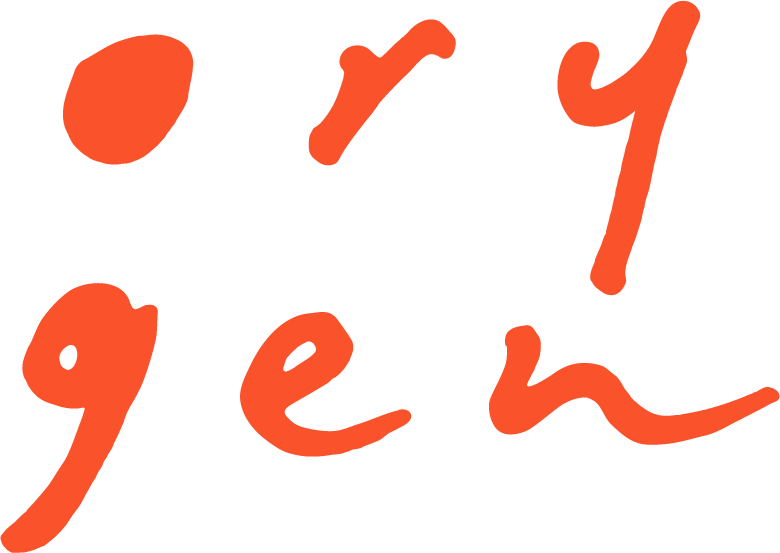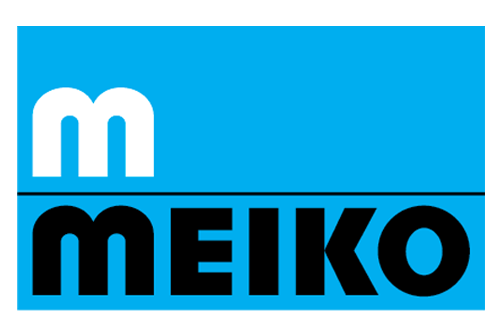|
The 2023 Australian Health Design Conference aims to bring together designers, clinical planners, and healthcare specialists to discuss the many small steps required to build better health buildings. Join us as we explore the latest trends and technologies in healthcare design and examine the role of design in shaping the future of healthcare. |
SESSION 019:00 - 10:30 | WELCOMEKate Copeland, Chair of the Australian Health Design Council Plenary PresentationDesigning Better Health Services: The Power of Consumer InvolvementShelley Thomson, Co-founder and Director, Patient Experience Agency In today’s rapidly evolving healthcare landscape, prioritising the human experience and promoting inclusivity in the design of health services and facilities is crucial. Shelley Thomson’s presentation delves into the significance of involving consumers in the design process to achieve these goals. Drawing from her expertise in design thinking, as well as insights gained from consumer interviews and real-world case studies, Shelley highlights the positive impacts of consumer involvement in healthcare design. Through captivating examples, she showcases innovative approaches that have led to the creation of patient-centric environments, improved health outcomes, and increased staff satisfaction. These success stories service as inspiration and demonstrate the transformative power of consumer involvement in shaping the future of healthcare. Attendees of the presentation will walk away with valuable insights into best practices, lessons learned and practical tips for effectively involving consumers in their own healthcare design projects. By recognising the importance of consumer perspectives, the presentation advocates for a collaborative approach that empowers individuals to actively contribute to the design process. Ultimately, this inclusive approach fosters better outcomes, strengthens patient experiences, and ensure that healthcare facilitates meet the evolving needs of the communities they serve. |
10:30 - 11:00 - Morning Tea |
SESSION 0211:00 - 12:15 | Government Leaders Panel DiscussionPlanning for a Sustainable Healthcare EcosystemRebecca Wark, Chief Executive, New South Wales Health Infrastructure Healthcare systems around Australia face many similar challenges, but they also have different conditions that set them apart. Addressing present requirements without inadvertently creating future issues requires more than just a quick fix solution. In this engaging session, we'll listen to insights from health leaders from four Australian jurisdictions. They will share their primary objectives, priorities, strategies, and the challenges they encounter while establishing a resilient healthcare system that caters to the diverse needs of their communities. Undoubtedly, there's immense value in learning from one another as we aim to enhance healthcare delivery for the Australian people and transcend conventional methods. |
12:15 - 13:00 | Keynote PresentationNSW Arts in Health StrategyBrigette Uren, Program Director Arts, NSW Health Infrastructure Exposure to the arts has a profoundly beneficial impact, improving patient health and wellbeing and through its use in health promotion and messaging, improving health literacy for individuals and the wider community. NSW Health Infrastructure’s Arts in Health Program integrates arts into NSW Health capital works to create engaging public health spaces and improve clinical health and wellbeing outcomes for patients, staff and visitors. The Arts in Health Program is delivered by Health Infrastructure in partnership with Local Health Districts, artists and communities as part of NSW Health’s $11.9 billion capital works program to 2024. The program has received several accolades locally and State-wide, including twice as Finalist in the Premier NSW – Well Connected Communities Award. In 2022 Health Infrastructure established the Arts in Health Infrastructure Award as part of the IMAGinE Awards. Brigette's presentation will focus on showcasing innovation for arts in health care services across a series of case studies in NSW and demonstrating impact of cross-industry practice between arts, construction and health care sectors. |
13:00 - 14:00 - Lunch |
SESSION 0314:00 - 15:30 | Research PresentationsArchitecture for Inclusivity: Designing for Non-binary YouthTracy Lord, Senior Associate I Health Lead, Billard Leece Partnership We often design environments to meet gender specific requirements, whether due to religious, cultural or lifestyle needs, but how do you navigate buildings when you are mis-gendered, non-binary or unsure of your gender identity? What barriers do we intrinsically create in architecture by applying gender to places and how do we shift this to focus on inclusivity. In working with the Youth Participation and Engagement Team at Orygen in a consultative design process for the Orygen Building in Australia, Billard Leece Partnership came to understand that one of the biggest issues of concern for young people was the inclusion of design for the LGBTQIA+ community, particularly in relation to gender and sexual orientation. Standard design solutions for amenities can become continually confrontational for these groups, but is it as easy as making them all gender neutral? And in what other ways do we subconsciously exclude them? The Orygen project is used as a case study in the review of gender inclusive spaces, as it sought to provide environments for youth who seek assistance for Mental Health issues. In studying this project, we understand that we can not design spaces for non-binary or mis-gendered people solely based on historical information and research. The multitude of current issues can only be understood by direct engagement and including these people in the design process. In this presentation, we review the issues of gender inclusivity and gender neutrality and the importance of inclusion with the design and consultation process. Design for social and cultural practices of Indigenous residents in aged careYE Ng, Senior Associate, Architectus Conrad Gargett The health of Indigenous Australians continues to lag well behind other Australians due to socioeconomic and environmental factors and health-related behaviours. As a result, Indigenous Australians can access aged care services from 50 years of age compared to non-Indigenous Australians, who must wait until they are 65 years. Limited research that examines the relationship between residential aged care design and Indigenous wellbeing is largely concentrated in remote areas rather than urban settings. Case study research of four residential aged care homes in South East Queensland establish empirical evidence about Indigenous residents’ social and cultural practices in residential aged care. And how architectural design might be used to improve the lived experience and wellbeing of Indigenous residents and their connections to Country, culture, family, kin, and community. Creating a culturally appropriate environment, particularly in care and health settings. Architecture of Compassion: Supporting Recovery from Complex TraumaChloe Piper, Higher Degree by Research Candidate - Deakin University Over the past decade there have been increasing calls for a ‘trauma-informed’ approach to care and practice within all health and social services and yet, despite the substantial body of research linking physical aspects of healthcare environments to physical and mental health outcomes and wellbeing, a trauma-informed approach to design is still in its infancy. Published research literature on the subject is limited; there is yet to be a consensus definition (Design Resources, 2016); and its implementation in process and practice are still in the early stages of development with little evidence at present to provide guidance (Shopworks Architecture Group, 2020). Drawing on new and complex understandings of wellbeing and the interrelationship between mind, brain, and body, this research investigates how knowledge derived from scientific findings can be utilised to inform the design of architectural and built spaces that are sensitive to the impacts and affects/effects of complex trauma, and responsive to the needs of individuals in recovery. |
15:30 - 16:00 - Afternoon Tea |
SESSION 0416:00 - 17:30 | Case Study PresentationsThe Healing Circle: Campbelltown Hospital, NSW
The Campbelltown Hospital Redevelopment, a $632 million venture, was designed to serve the growing healthcare requirements of the Campbelltown Macarthur community. As one of the largest healthcare providers for the Aboriginal and Torres Strait Islander populations in New South Wales, the project prioritised a unique blend of healthcare design, art, and cultural heritage. Representatives from the project team will share insights on how a united approach between the client group, architect, contractor, and community, was instrumental in shaping the Campbelltown Hospital Redevelopment as a pioneer in the concept of healthcare as a healing environment. From Culture to Country to Community: New Dunedin Hospital, Whakatuputupu
The global pandemic, climate change, mental health, a commitment to reconciliation, and the convergence of health, education and research, is transforming our approach to the design and delivery of hospitals and healthcare infrastructure at Warren and Mahoney and HDR. In this climate, care model innovations underpinned by digital transformation and overlayed with culture, identity and community is shifting our focus from ‘health’ to ‘health, wellness and preventative care’. In conjunction, Warren and Mahoney and HDR, are designing New Zealand’s $1.59 billion Whakatuputupu – new Dunedin Hospital. Delivered in partnership with Te Whatu Ora and built in two stages, the new hospital will support a modern healthcare system and address the needs of the Southern region for the next 50 years. Once complete, the facility will act as an epicenter for this diverse local community and transform the hospital from a stand-alone entity to a world-class, digital, tertiary hospital that cultivates knowledge transfer and enables innovation. In collaboration with Mana Whenua and led by Aukaha, Whakatuputupu, is the co-design process being used to deliver the new Dunedin Hospital, which incorporates tikanga and the cultural values and chronology of the site to embed the hospital with a sense of place. Ultimately, by co-designing intergenerational, resilient, and equitable spaces with a deeper connection to place and the local community, there is a unique opportunity to transform the patient and provider experience and elevate the delivery of healthcare for future generations. |
17:30 - 20:00 | Cocktail PartyPlease join us at the bar for networking, drinks and nibbles. The Cocktail Party is included in Full Conference and Wednesday Only tickets. |
SESSION 058:30 - 9:30 | Research Presentations2023 AHDC Research Scholarship: Towards an Architecture of HealingCarla Mileo, Master of Architecture Student, University of Melbourne A thriving Living Lab for healthcare? Lessons from NOVELLJulie Bernhardt AM, Co-Head, Stroke Theme, Florey Institute of Neuroscience and Mental Health |
9:30 - 10:30 | Plenary PresentationConstructing Health: the Elements of Enriched EnvironmentsTye Farrow, Senior Partner, Farrow Partners Architects, (Toronto, Canada) What if we were dedicated to building places that cause health? Traditionally, most cultures have had a holistic approach to health and wellbeing. This comprehensive view encompassed mental, physical and spiritual health and social well-being and considered the effects of physical environment in addition to diet and lifestyle. Today, ‘health’ has become synonymous with ’health care’ as the western, evidence-based model extinguished the older view. However, recent research has confirmed that where one lives has more impact on one’s health and wellbeing than the medical system (beyond episodes of serious disease, of course). In his talk, Tye discusses the concept of ‘activated optimal health’ through environmental enrichment, and the role our built environment plays in this equation. His lecture will look at the cross-fertilizing knowledge between design and brain science, which can lead to the conditions in which people can flourish, not merely survive. Tye will draw on material from his forthcoming University of Toronto Press book, titled “Constructing Health: An Exploration of Generous Architecture Through the Neurological, Psychological, and Emotional Benefits of Enriched Environments” which will be published in the fall of 2023. He will also reference examples of the firms designs, including healthcare centres, in Canada, Europe and Israel. |
10:30 - 11:00 - Morning Tea |
SESSION 0611:00 - 12:15 | Industry Leaders Panel DiscussionTransforming Healthcare for an Inclusive FutureJodi Hallas, Executive Director, System Planning, Queensland Health Healthcare systems worldwide are grappling with similar challenges regarding service accessibility and demand response, workforce shortages, and patient outcomes. The Australian healthcare system is no stranger to these threats. Delivering ‘inclusive’ healthcare systems is a shared vision between all health entities and will require radical transformation that leverages the appropriate use of technology, reshaping workforce models, empowering communities, and establishing interconnected ecosystems and partnerships, to name a few. For this session, we have gathered a group of health industry leaders, each coming from a different professional background with the aim to get one step closer to understanding how can we as a health design industry unify our efforts to realise a common vision through our approaches to investment and development, through service planning and models of care, and through building design? |
12:15 - 13:00 | Keynote PresentationHealth, Culture & Place: Country as co-therapistProf Janet McGaw, Associate Professor Arch. Design & Practice, University of Melbourne Disparities in mental health and wellbeing between First Nations and non-Indigenous people in Australia persist, despite a national, bipartisan commitment to Close the Gaps in Disadvantage over ten years ago. Youth mental health statistics are particularly poor. First Nations young people are twice as likely to report psychological distress, and/or a long term mental health diagnosis, and/or be hospitalised for self-harm; and are four times as likely to die from intentional self-harm or suicide. There are a complex range of historical, political, economic, and cultural reasons for this. But an important one is the insistence of Western health, and places in which Western healthcare are delivered, to privilege values that are antithetical to Indigenous ways of knowing, doing and being. This paper presents outcomes from a statewide, creative, and qualitative research project that has been exploring the relationship between culture, mental health and ‘place’ for young people. Community yarns with 47 First Nations Elders, senior people, and young people with an interest in cultural practices and health from around Victoria, have revealed that relationship with Country is critically important to mental wellbeing. Conversely, disconnection from Country is a factor in poor health. It has led to the development of an Elder-governed cultural therapy program, delivered in Royal Park by one of the authors, (a First Nations psychiatrist), in which Country becomes a co-therapist. Outcomes are promising. It suggests that healthcare environments ought to facilitate a fluid connection with Country and safe places for community to gather. |
13:00 - 14:00 - Lunch |
SESSION 0714:00 - 15:30 | Research and Strategy PresentationsTransforming healthcare environments through technologyHediyeh Vahdat, Managing Director, Lineaire Projects Australia is on the cusp of a new health system dealing with new challenges. Our national systems are siloed by funding source, unresponsive to clinical and technological change at scale; essentially analogue in a digital age. Technology offers a new lens to view the patient journey comprehensively across the spectrum of preventative, diagnostic and therapeutic settings. Internationally, there has been evidence to support the utilisation of technological advances to compliment patient healthcare. This will be discussed through case studies. If the objective of the hospital is to deliver patient access to appropriate care in effective and efficient settings, the unit of measurement changes from the hospital to the patient. Integrating technologies and information may give the hospital expanded roles with design challenges. Designing around technology poses new challenges and opportunities. The challenges of designing around technology are not yet completely understood. An agile funding system is needed to enable the integration of technology into the new health system and medico-legal responsibility needs to be further explored. Technology offers new opportunity to transform the health system from a linear model, where a patient needs to attend the system, to a range of professionals delivering care directly to the patient. Leveraging spatiotemporal data to optimise and transform healthcare environmentsDr Brett Pollard, NSW Senior Researcher, Hassell Creating supportive, effective healthcare environments is critical to healthcare delivery and ultimately patient outcomes. A key factor to optimising and transforming the design of these environments is understanding the movement flows and activity patterns of patients, healthcare professionals and visitors, and how these change over time. However, traditional data collection methods such as surveys provide little, if any context and observational studies capture only brief snapshots in time and are open to reactivity and other biases. Recent advances in the availability and analysis of spatiotemporal data offer significant opportunities to overcome these issues. By leveraging spatiotemporal data, healthcare professionals can gain valuable insights to help transform healthcare environments and meet future demands. Drawing on the latest research and real-world case studies, the presentation will demonstrate how spatiotemporal data analysis can inform healthcare design decision- making, from individual patient care to hospital and urban planning. The presentation will emphasise the importance of understanding utilisation patterns and place-use trends and highlight the potential benefits of incorporating spatiotemporal data into healthcare planning and design. By analysing data on people's movement and behaviour, designers and healthcare professionals can gain a deeper understanding of the dynamic relationship between people, place, and time. Operational Commissioning Commencing Early: The Whys and BenefitsCarissa Kleiman, Senior Consultant, Health Advisory, Johnstaff Operational readiness and commissioning are critical components of planning and delivering a safe and quality healthcare environment, which should be approached uniquely for each health precinct redevelopment to meet the needs of the catchment profile and the nuances of the facility. A robust operational readiness and commissioning strategy is required long before the facility’s design takes shape to ensure the hospital is appropriately resourced, prepared, and safe to support the transition of services and commencement of new services in the building. |
15:30 - 16:00 - Afternoon Tea |
SESSION 0816:00 - 17:30 | Case Study PresentationsUnlocking potential through collaborative design, positioning and partnering
Ugenthiri Naiker, Director Innovation, Improvement & Planning, North West Hospital and Health Service, QLD Health Healthcare delivery has shifted from a centralised model into a localised one, providing care on Country and closer to home. This shift focuses on keeping people out of hospitals by providing the right care at the right time, investing in digital infrastructure, and delivering care typologies that respond to people and places. This approach is essential for regional and remote healthcare services and demonstrates a tangible commitment to First Nations’ health ownership. It requires careful planning and design thinking to create health precincts that understand and promote wellness for patients, their families, and healthcare staff. The North West Hospital and Health Service (NWHHS) is a remote service in north western QLD comprised of 11 health facilities serving a diverse community with varying landscapes, industries, and people. There are five acute care facilities, with Mount Isa Hospital being the single tertiary facility for the region. The region is home to around 27,000 people, of which 30% identify as First Nations Peoples, significantly higher than the QLD state average of 4.6%. The population of First Nations people within towns varies from 4% in Julia Creek to 94% in Doomadgee, requiring bespoke outcomes and tailored healthcare delivery within a cohesive and consistent framework. This presentation will discuss our methodology for delivering a high-value master plan that has successfully allowed NWHHS to plan for the future in today's evolving health landscape. Our clinical services and master planning processes are informed by top-down and bottom-up approaches integrating national and state-wide strategies, including the NWHHS Local Area Needs Assessment and NWHHS Health Equity Framework, alongside community consultation to ensure high-quality, sustainable health services for the people of North West Queensland. Through a collaborative and interdisciplinary approach, the master plan has articulated a pathway for change, moving from a traditional hub-and-spoke model to a networked care approach, realising the potential for rural and remote health care. The master plan details a 15-year Future State which prioritises evidence-based non-infrastructure solutions responding to stable populations and focuses on transforming the identities of critical facilities. Through consultation, we identified opportunities for the health service to better integrate into the community through socialisation and accessibility and explored the development of knowledge destinations as attractors. The service-led infrastructure model not only fulfils the requirements of health service delivery but prioritises staff and patient experiences, creating a whole-of-health ecosystem well-being focus. Dual Purpose Emergency Department: Cairns South Health Facility, QLDRebecca Johnston, Executive - Health, Peddle Thorp In 2011, extreme weather event Cyclone Yasi, triggered the evacuation of Cairns Hospital, resulting in a reduction of acute clinical service delivery for the region. Following this event, the regions health delivery capacity was reviewed with funding committed for the development of an alternative site for critical and emergency care delivery during extreme weather events. The Cairns South Health Facility is the only facility of its kind in Australia. The building is designed as a category 5 cyclone rated, dual purpose facility, operating in 2 modes of healthcare; Ordinary and Emergency. A key objective within the brief for the building was for all functional, clinical areas to be able to be utilised throughout the year. Ordinary mode delivers community health, with the ability to run outpatient services. In the lead up to an extreme weather event, the facility converts into Emergency mode, providing critical emergency care services, including an ED, an ICU, an operating theatre and dedicated birthing spaces. Extensive stakeholder briefing was conducted, as the Emergency mode took precedence, compromise became inherent within the multi-functional, adaptive design. Reimagining the patient bedroom: Emotional Design at John Hunter HospitalJill Hall, Senior Associate, BVN Arguably, the most important space for recovery within the hospital is the patient bedroom. Design guidelines and project briefs for these spaces currently focus on clinical drivers and operational efficiencies. Architectural aspirations of creating space to support and enhance human experience often get lost in the noise of cost, efficiency, and safety. To facilitate a more wholistic approach, the Hunter New England Local Health District developed an emotional design brief, which they embedded within all strategic and project briefing documents, bringing human-centered design to the forefront of project outcomes. The challenge for the John Hunter Health and Innovation Precinct project team was to create a patient bedroom designed to support the emotional needs of patients, staff and carers alike, whilst also enhancing patient safety and service delivery. In responding to this challenge, we embarked on a rigorous methodology which identified goals through the emotional design brief, sought out new ideas with a design competition, developed a shared design through collaboration and consultation and tested assumptions with the construction and scenario testing of fully fitted-out prototype rooms.We are excited to share our journey and design outcomes with you. |
17:30 - 19:00 | Closing Remarks and AcknowledgementsPlease join us at the bar for celebratory drinks until 7pm. Closing Drinks is included in Full Conference and Thursday Only tickets. |
EXHIBITION18:30 | Novell Redesign Interactive ExhibitionVenue: Harbour Gardens, DocklandsCome and experience an interactive exhibition showcasing the stroke rehabilitation hospital of the future, the culmination of a four-year living lab and a collaboration between architects, scientists, stroke survivors, clinicians, and policy makers. We have developed innovative and rigorous research methods and worked with leading healthcare architects to develop new facility designs and service models for stroke rehabilitation. View our designs using Virtual Reality for a truly immersive experience. Join us on the evening of Thursday 2nd Nov (from 6:30pm) at the beautiful Harbour Gardens, Docklands, for the exhibition opening and celebration of the NOVELL project. Drinks and nibbles provided. The exhibition is 300m (5 minutes walk) from the Conference Venue.
|
SITE TOURS | Victorian Heart Hospital631 Blackburn Rd, Clayton VIC 3168 | Limited tickets | $60 +GSTThe $577 million Victorian Heart Hospital is Australia’s first state-of-the-art, specialist cardiac hospital. It provides innovative, holistic and patient-centred care, as well as world-leading research and education. The hospital integrates clinical cardiology services, research and education to create a centre of excellence, raising the profile of cardiovascular research, treatment and training. Patients with heart disease are now able to access world-class cardiac care and ground-breaking research, all under one roof. The hospital welcomed its first patients in February 2023.
|
Knox Private Hospital262 Mountain Hwy, Wantirna VIC 3152 | 9am - 1pm | $60 + GSTKnox Private Hospital by Healthscope is undergoing a major redevelopment to meet the growing demand for quality health care across Melbourne’s east and southeast. New and expanded facilities include a new 3 storey North Tower; two new patient wards with single rooms and private ensuite; an upgraded and expanded Diagnostic Cardiology Unit; a new Main Reception area; new Patient Admissions; new and larger HPS Pharmacy; new Café; and 9 additional premium specialist consulting suites. |
In Vitro Mobile CSD7-9 Summit Rd, Noble Park 3174 | 9am - 1pm | $60 + GSTIn Vitro Technologies Mobile CSD’s are fully functional and compliant sterilisation services with footprints ranging from 68 sqm (3 module) , 82 sqm, (3 module) or 100 sqm (4 module). The modules are fully equipped and assembled on site to provide a turn-key solution to support a refurbishment of an existing department with minimal disruption. |
Orygen National Centre of Excellence in Youth Mental Health2pm - 4pm | Limited TicketsOrygen's National Centre of Excellence in Youth Mental Health new facility was established in 2019 and was jointly funded by the Victorian Government, and funding obtained by Orygen from the Australian Government, The University of Melbourne, The Colonial Foundation and the Ian Potter Foundation. The award-winning centre that houses Orygen integrated translational research and innovative platform for preventive clinical care was designed for young people who experience mental ill health. |
Thank you to our generous Tour Partners for providing opportunities to visit them. To join a tour, you must be a current AHDC member and registered for the conference. Go to Registration Page >> |
AHDC2023 will be held on Wurundjeri Woi-wurrung Country. The Australian Health Design Council respectfully acknowledges the traditional custodians of the land on which we meet and work, all around Australia. We pay our respects to Elders past, present and emerging, and acknowledge their wisdom, actions and knowledge in caring for the health of Country and People. Event details are still being confirmed. Subscribe to the AHDC mailing list for conference and event updates. |
Continuing Professional Development is available for Project Managers, Engineers and Architects. Registered Architects can log formal CPD points for each session attended (1 point/hour). The session Q&A is an opportunity to allow for feedback and discussion to assist in answering the questions. To claim formal points, please provide the following:
| Please review the Terms and Conditions before purchasing. Cancellation Policy: More than 30 days - full refund processed. Less than 30 days - account credit only. Substitutions - free at any time. To cancel, please sign into your AHDC account and navigate to your profile. Go to "Event Registrations" to submit a cancellation. Last minute cancellations will receive an account credit only. This can be used to pay for annual membership and future events and conference tickets. Substitutions: If you can not longer attend for any reason, we encourage you to nominate someone else to participate in your place. Substitutions will be processed on the day at event registration, please bring a digital copy of the original ticket confirmation. One Day Tickets: Due to limited capacity, one day tickets transfers are subject to availability. Please check if tickets are still available, before cancelling your registration. This will generate an account credit which you can now use on the new ticket type. Other Conditions: The preliminary program is preliminary and subject to change. |
Conference ThemesSoon after its discovery, Penicillin became a magic bullet which transformed our ability to fight infection. Today, we continue to search for new and transformative approaches to healthcare. As design specialists, we understand the importance of innovation and research in creating buildings that are healthy, efficient, adaptable, and resilient. However, there is no one-size-fits-all solution to healthcare design. It takes continuous effort and a willingness to challenge tradition to achieve real-world transformation. Our three conference themes aim to highlight a wide range of approaches to tackling healthcare design. |
The Australian Health Design Council is proudly supported by partners in the planning, design and construction industry. Sponsors have no editorial control over the conference programme and do not provide financial or material compensation to presenters. AHDC is a registered non-profit organisation. All funds raised are directed towards conference costs and future AHDC events and initiatives. You can find out more about our governing principles in our Constitution. Conference Partnership is open to industry and product manufacturers, suppliers, health educators, advisers, design practices, government agencies, health service representatives. A range of options are available, from session sponsorship, trade booths and displays, and cross-promotion opportunities. Contact us for more information. |
Join the Australian Health Design Council to become a part of the national health design community.The Australian Health Design Council is a not-for-profit, non-government organisation established in 2011 that provides a forum for all professionals involved in the Australian health design sector to share knowledge, develop expertise, foster research and enhance skills in health facility planning, design and management across both the private and public sectors. Find out more and become a member at www.aushdc.org.au |
















